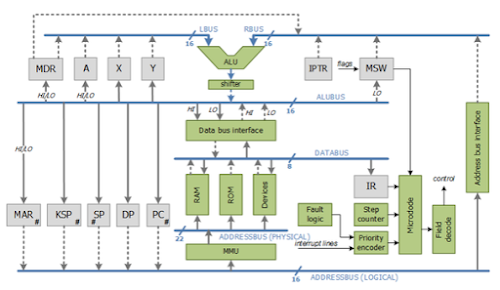16-bit microprocessors
In PC design, 16-piece numbers, memory addresses, or other information units are those that are 16 bits (2 octets or 2 Bytes) wide. Likewise, 16-piece CPU and ALU designs are those that depend on registers, address transports, or information transports of that size. 16-piece microcomputers are PCs in which 16-piece microchips were the standard.
As n-bit register can store 2n various qualities. So therefore, 16-piece register can store 216 distinct qualities. On the off chance that we consider the marked scope of whole number qualities that can be put away in 16 bits is −32,768 (−1 × 215) through 32,767 (215 − 1). In any case, then again if there should be an occurrence of unsigned range is 0 through 65,535 (216 − 1).
Since 216 is 65,536, a processor with 16-piece memory locations can straightforwardly get to 216 = × 26 × 210 = 64 x 1024 = 64 x 1K = 64 KB (65,536 bytes) of byte-addressable memory. On the off chance that a framework utilizes division with 16-piece section balances, more can be gotten to.
In the year 1978, Intel presented the 16-piece microchip 8086 (16-piece transport) and in the year 1979, Intel presented 8088 (8-piece transport). It had 29,000 transistors. In the year 1981, IBM chose the Intel 8088 for their PC (IBM-PC).
In the year 1982, Intel discharged the 16-piece chip 80286 (having 1,34,000 transistors) to be utilized for the trend setting innovation PCs (PC-AT) as CPU. It was called Intel 286 and was the first Intel processor that could run all the product composed for its antecedent Intel 8088.
To have the extraordinary business achievement, this retrogressive programming similarity was significant. Note that this product similarity stays a sign of Intel's group of chip.








No comments:
Post a Comment
If you have any Doubt, Please let me know